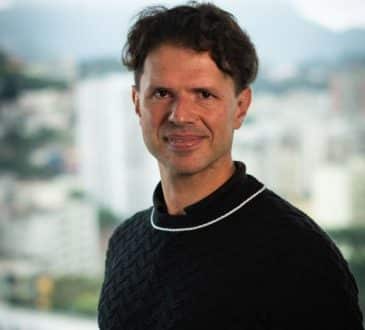Lifestyle Business versus Scalable Business – how I live a life by design

Eight years ago I sat in a room of business people and the facilitator asked a question that would change the way I worked and the way I lived. The question was this: ‘Is your business a scalable business or is it a lifestyle business?’
Initially my ego screamed ‘SCALABLE’ with a resounding force. My ego wanted to take on the world, to prove my expertise, to grow my business exponentially, to stretch and reach and conquer a significant portion of my target market – the whole world!
But then, my inner confident and clearly more pragmatic voice suggested my ego hit the pause button and that I sit down and give this question a good hard think.
I like my voice of confidence and, according to Forbes, I have good reason to – confidence is having faith in your abilities and what you believe in yourself. Your ego, on the other hand, operates purely out of self interest. It seeks approval, accolades and validation at all costs.
Telling my ego to calm the hell down, my voice of confidence asked me a series of questions:
Do you want to work all of the time?
Do you want to hustle to attract investors?
Do you want to lose control of your business as you grow and your investors have more say?
Do you want to grow aggressively?
How important is quality of life to you in the next 1, 5, 10 years?
Do you have other interests you want to pursue outside your business?
How much do you want to earn?
How much do you need to earn?
How much do you want to spend?
What sort of lifestyle do you want to lead?
Why did you go into business in the first place?
And these questions led to more questions and a lot of answers which made it very apparent to me that I did not want to work every hour that god sent me. That I did not want or need to take over the world, to lose control of my time, to lose control of my business, and I absolutely did not want to compromise on my freedom.
Alas for my ego, it was clear that I did not want a scalable business. I wanted a lifestyle business – a business that I love and enjoy and that helps as many people as possible but also one which allows me to work when and where I want and in a way which does not compromise the life I wish to lead.
This led to the next logical question for me: How much money do I need to earn each year in order to maintain my lifestyle?
I did the following exercise for the first time eight years ago and every year since – each October (where I do the hard yards) and then again in January (when I do a quick review), I follow the same 5 steps:
- My Expenses
First I map my personal expenses each month for the previous twelve months to create a baseline lifestyle budget of essentials such as my rent/ mortgage payments; utility bills; phone and internet; food; medical; clothes; petrol etc. I then divide this figure by twelve to work out my average personal expenses per month.I map my business expenses in the same way and delete/unsubscribe from any services that I no longer need. Again, I divide my annual business expenses by twelve to work out my average business expenses per month.
Next I think about my big rocks for the following year: Where do I want to travel? Am I happy living where I am living? Do I have any big, unexpected purchases coming up? Do I have any big projects on the horizon? And I estimate how much these will cost me for the year.
Finally I work out how much I wish to invest in my superannuation (as much as I am allowed), at which point I am left with a pretty good estimate of how much money I need to earn in the coming year in order to maintain my lifestyle.
(I need to pause here to share that my lifestyle is not overly extravagant. I drive a nice enough car, I eat out once a week with my partner, I occasionally buy clothes, I like books but tend to buy them from thrift shops. I love to travel and intend to prioritise this area of my life. You get the idea.)
- My Products
Next, I map out the core products and services my business offers. My five 5 core products are Speaking; 1:1 Coaching; Group Coaching; Consulting; and Writing. I know exactly how long it takes me to deliver each product. Diversification of my service offerings across five products not only allows me to enjoy the full breadth of my work, but it also offers great contingency – if the speaking circuit is quiet I can ramp up my coaching and vice versa. I love writing, so I always make time for this. For me – this is about doing what I love the most. - My Pricing
Next I price each product for the year. My pricing is built on the advice of my coach and the work of Andrew Griffiths – in particular his terrific book, ‘Someone has to be the most expensive. Why not make it you?’. Griffiths’ simple premise is that regardless of your industry or the current economic conditions, someone in your line of work needs to be the most expensive. If you want it to be you, then you must also be the absolute best. It’s a simple guiding principle.Some years my pricing remains static. In other years I increase my pricing. But every year, my pricing is based on the expertise I have honed over years of work, the best selling and award winning books I have written (5 to date), the audiences I have been invited to speak to, the publications I am invited to share my thought leadership with, and the reputation I have of saving my clients over 30 hours of lost time a month – clients such as Nasdaq, ASX, Paris and London stock exchange listed companies including Atlassian, L’Oreal, BUPA, Westpac, Specsavers, BAE and Air Liquide.
- My Work Schedule
Next I work out how many products I need to sell each year in order to meet My Expenses (see Step 1). I do this by setting a sales target per product, with a skew to the products I most enjoy delivering. I love Coaching and Speaking (both of which pay well), but I also love Writing (which does not pay well at all) so I prioritise these products.Knowing how long it takes to deliver each product (see Step 2), and adding time for business development, relationship management and work/life admin allows me to map out a full work year, which currently looks like this: 3 days of work a week (leaving 4 days of recreation and rest) over 9 months of the year (leaving 3 months for travelling, recreation and rest).
- My Mindset
My final step is to take some time to keep my ego in check- to remind myself that I do not want, need or intend to take over the world. Instead, I want to lean into my inner confidence by doing the work I love – when, from where, for who, for how long and for how much I choose to charge.
I have created a lifestyle business that works for me – allowing me to do what I am an expert at – helping other people invest their time so well that they have all the time they need to design and live a life they love.
Written by Kate Christie.
Have you read?
World’s Most Innovative Countries, Best Fashion Schools. Best Universities. Best Medical Schools. Best International High Schools. Countries: Most Female Billionaires.
Bring the best of the CEOWORLD magazine's global journalism to audiences in the United States and around the world. - Add CEOWORLD magazine to your Google News feed.
Follow CEOWORLD magazine headlines on: Google News, LinkedIn, Twitter, and Facebook.
Copyright 2025 The CEOWORLD magazine. All rights reserved. This material (and any extract from it) must not be copied, redistributed or placed on any website, without CEOWORLD magazine' prior written consent. For media queries, please contact: info@ceoworld.biz








